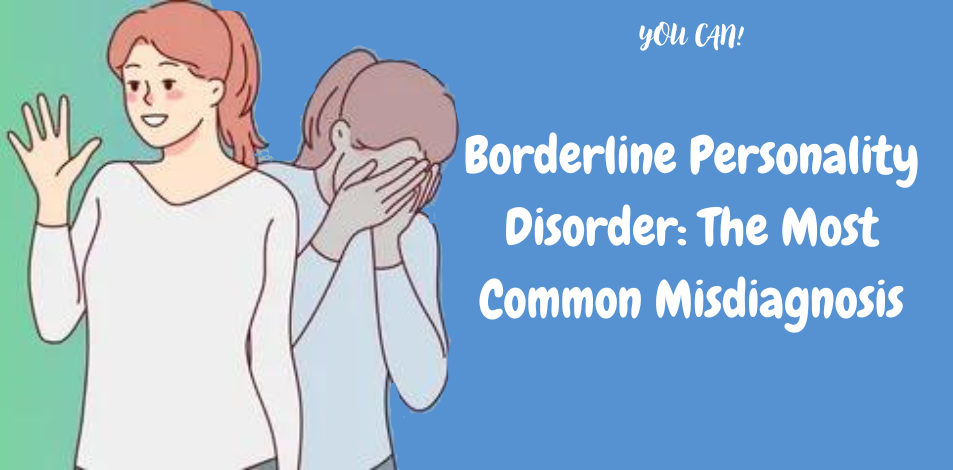
Borderline Personality Disorder (BPD) is often misunderstood, leading to frequent misdiagnosis in clinical settings. Characterized by intense emotional instability, difficulty maintaining relationships, and an unstable sense of self, BPD presents symptoms that overlap with other mental health conditions. This overlap can make it challenging for healthcare providers to correctly identify the disorder, often resulting in misdiagnoses of anxiety, depression, or bipolar disorder.
Why is BPD Commonly Misdiagnosed?
The complexity of BPD symptoms is one of the primary reasons for misdiagnosis. Many individuals with BPD experience mood swings, emotional intensity, and impulsivity, which are also present in other mental health conditions like:
Bipolar Disorder: One of the most common misdiagnoses for BPD is bipolar disorder, particularly bipolar II. Both disorders involve significant mood changes, but bipolar disorder typically features distinct periods of mania and depression, while BPD’s emotional fluctuations are more rapid and triggered by external events.
Major Depressive Disorder (MDD): BPD patients often experience chronic feelings of emptiness, sadness, and hopelessness, symptoms that overlap with major depression. However, depression in BPD is often situational and fluctuates with interpersonal relationships, whereas MDD presents more consistently.
Post-Traumatic Stress Disorder (PTSD): Since many individuals with BPD have experienced trauma, their symptoms may also resemble PTSD. Flashbacks, hypervigilance, and emotional dysregulation are common in both disorders.
Related : What to Know If You’re Concerned About a Toxic Relationship
These similarities can result in a misdiagnosis, leading to incorrect treatment strategies that may not fully address the root of the patient’s struggles.
Impact of Misdiagnosis
Misdiagnosing BPD can have significant consequences for the individual. Treatment for other mental health conditions like depression or bipolar disorder might not address the unique challenges of BPD, such as fear of abandonment, chronic feelings of emptiness, and unstable relationships. Without targeted therapies like Dialectical Behavior Therapy (DBT), which has been shown to be highly effective for BPD, patients may continue to struggle without significant improvement.
Moreover, the stigma surrounding BPD can further complicate an accurate diagnosis. Because individuals with BPD are often seen as difficult or overly dramatic, their symptoms might be dismissed, leading to a reluctance to offer a BPD diagnosis and instead focusing on more socially acceptable conditions like depression or anxiety.
Challenges in Diagnosis
Diagnosing BPD requires a nuanced understanding of the disorder and careful evaluation by a mental health professional. The Diagnostic and Statistical Manual of Mental Disorders (DSM-5) outlines specific criteria for BPD, but diagnosis remains a clinical challenge. Some patients present with symptoms that seem to meet the criteria for multiple disorders, making it hard for clinicians to disentangle overlapping symptoms.
Another challenge is that BPD is a personality disorder, not classified purely as a mood or anxiety disorder. Personality disorders are often more difficult to diagnose because they involve long-standing patterns of behavior and thoughts, rather than the more episodic nature of mood disorders like depression or bipolar disorder.
Why Early and Accurate Diagnosis Matters
An accurate diagnosis is crucial for effective treatment. Individuals with BPD often respond best to therapies tailored to their unique emotional and interpersonal struggles, such as DBT, mentalization-based therapy (MBT), and schema-focused therapy. These therapeutic approaches target the core features of BPD, including emotional dysregulation and impulsivity, offering patients the tools to manage their symptoms more effectively.
Related : 6 Types of Relationships and Their Effect on Your Life
An early and accurate diagnosis can help individuals with BPD avoid years of ineffective treatment and potentially harmful medications meant for other conditions. It also gives them the opportunity to develop a greater understanding of their experiences and work toward meaningful recovery.
Moving Forward: The Importance of Awareness
Improving the recognition and understanding of BPD is essential in reducing the rate of misdiagnosis. Clinicians must be trained to recognize the specific characteristics of BPD and its differences from mood and anxiety disorders. Public education and reducing the stigma associated with BPD are also important steps toward ensuring individuals receive the help they need.
For individuals who suspect they may have been misdiagnosed, seeking a second opinion from a mental health professional familiar with personality disorders can be a critical step toward receiving the right treatment.
In conclusion, while BPD is one of the most commonly misdiagnosed mental health conditions, greater awareness and understanding of the disorder can lead to earlier, more accurate diagnoses and better outcomes for those affected.




